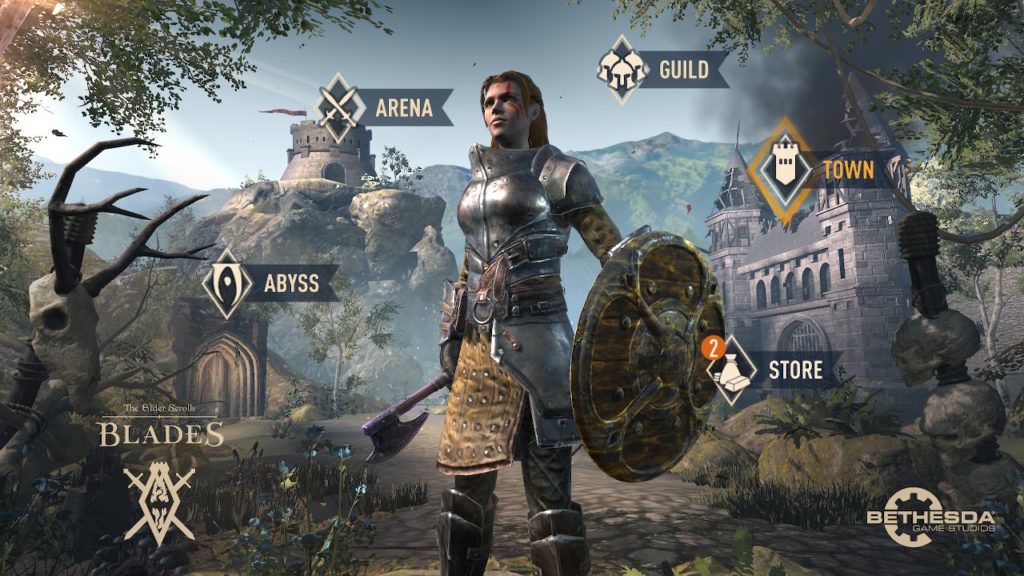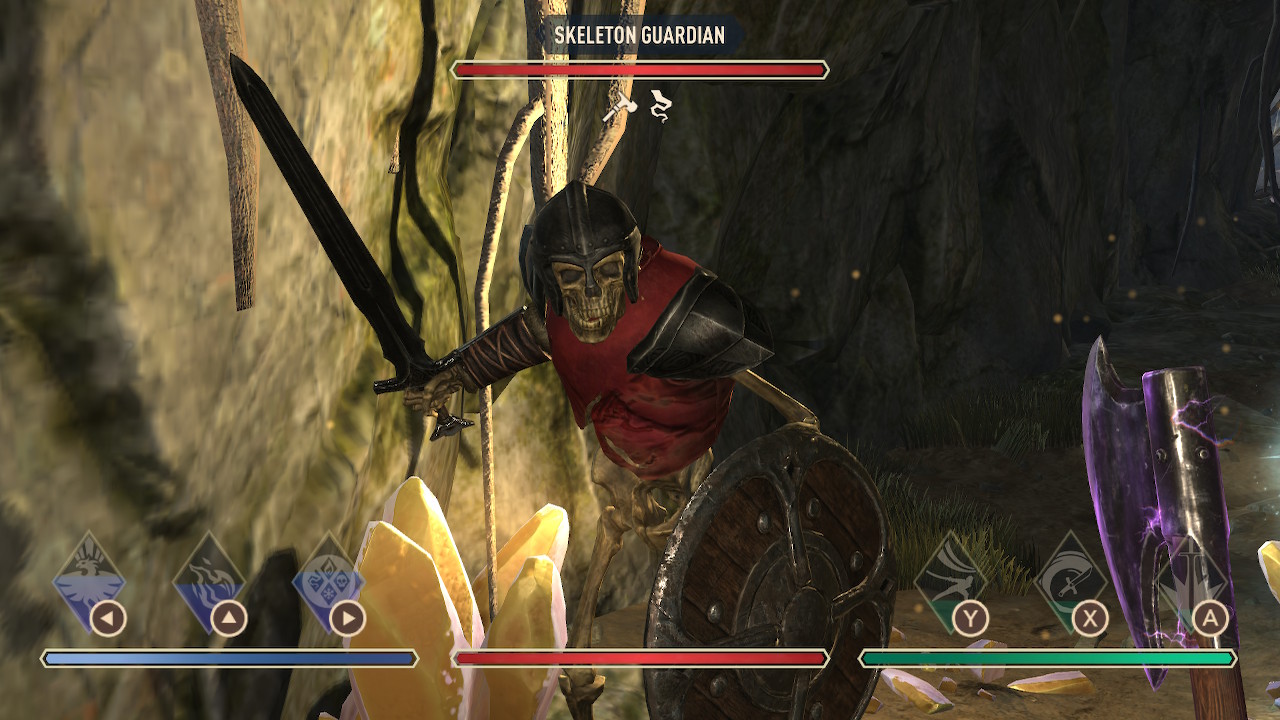I’m always looking for a good F2P game to play for awhile. I never stay with them for long. They tend to follow a similar pattern of providing a lot of enjoyable, entirely free game before essentially locking you out of playing the game as much as you’d like unless you start paying money.
That’s usually when I uninstall. Some F2P games, like Final Fantasy Brave Exvius and Idle Champions of the Forgotten Realms were enough fun that I spent some money on them (in the case of FFBE, a lot of money over the couple years I played). I don’t mind supporting F2P games I enjoy — their developers need money, too. I just mind when the cash grab becomes a real blocker to play.
That hasn’t happened with Elder Scrolls blades — yet, anyway.

Elder Scrolls Blades is set in the Elder Scrolls world of Tamriel. You create a character from the traditional Elder Scrolls human and non-human races and find yourself on the road back to your home town, a town you find burning and in ruins after an attack from a force of mercenaries led by a dark queen.
Your job is to rebuild your town and free it from the various creatures looking to take advantage of the chaos to carry off the townsfolk and interfere with the reconstruction.
As in the main Elder Scrolls games, you don’t have any particular class. You instead choose skills on which to focus as you level up. These group into three different skill trees; magic, physical, and passive. Characters will pick and choose from these based on their particular play styles, but there are some strongly suggested skills to take up no matter which path you choose (Elemental damage resistance and Fireball. Just so you know).
Game play is split into three main activities. The first, where players spend the majority of their time, is in dungeon runs.
Dungeon runs are instanced, somewhat randomized and largely on rails combat runs where you will walk from encounter to encounter. Between encounters, you may find loot contains to break, treasure chests to open, and food to eat to restore health.
Encounters are either one-on-one encounters or swarm encounters. In the first sort, enemies will stack up and approach you one at a time. In the second, you will be attacked by several creatures at once.
No matter what sort of encounter you face, the creature or creatures that come at you have specific weaknesses. The key to success here is matching your attacks with their weakness. Creatures typically have both a weapon and an elemental weakness, and if you can match both of them, the fight will be over pretty quickly.
This does force you to carry along a wide variety of weapons, but you’ll soon find the ones that are most valuable. (For instance, a fire axe will make swift work of any spriggan you encounter).
Attacks are based off a delay-based system. You alternate between right and left attacks, waiting for an expanding ring to grow and flash white in order to score critical hits.
You can (and should) also block attacks when you see your enemy raise their arm or other friendly appendage to strike at you. Doing so stuns them for a brief time, giving you an excellent opening to spam spells. Attacking them while they are blocking, however, stuns you and opens you up to devastating attacks, so don’t do that.
Most runs end with a boss encounter, typically a stronger version of the creatures you have already faced. This boss will usually require you to have identified a weakness that you can exploit, or you will use a lot of healing potions and will need to visit the local alchemist once in town.
If you have one.
The second sort of game play is the town creation system. Using materials you gather in dungeon runs, you can repair the burning parts of your town, build various useful merchant homes (such as a smithy, alchemist, workshop and so on), and rebuild homes for your ungrateful townsfolk.
As you reconstruct the town, you will attract people back to the town, some of whom you will have rescued in missions, and the prestige of the town will grow, allowing you to construct more shops, better dwellings, and move the plot along.
The final sort of game play is found in the Arena. This is the only mode where you can potentially interact with other players in real time (some non-real time interaction is possible via the guild system).
You spend a short time in a lobby to look over your opponent before meeting them in battle; this gives you time to play the emotes that ESB continually tries to sell you. For instance, you could appear “vexed”. This would have cost you 400 of the emerald-like “pearls”, their cash shop currency.
Actual players don’t have a handy weakness chart, but you can expect your opponent to come at you with elemental attacks (like Fireball) and weapon attacks. As with NPCs, your strategy is to anticipate opponent attacks and block them, then respond with your own flurry of attacks. Most players will try to slam you with some sort of lingering attack, like poison or burning, so that all they really need to do is land one of those attacks, or a flurry of melee attacks where the weapon is attuned to that element.
I picked up Elder Scrolls Blade on a whim while looking through the Nintendo Switch store and have stayed with it longer than I expected. It’s a fun game to while away the time waiting for EverQuest login queue.

